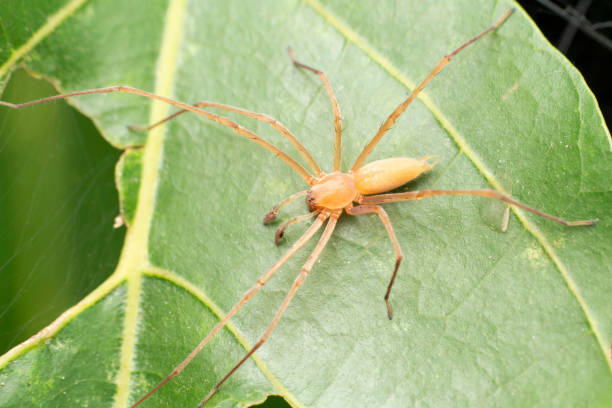
Spider Legs: All You Need To Know
Imagine having eight legs, each uniquely designed to perform specific functions. Welcome to the intriguing world of spider legs! These multi-functional limbs are crucial for spiders’ survival and behavior, from hunting to navigating complex environments. In this blog post, we’ll explore the anatomy, functions, and fascinating adaptations of spider legs, offering insights into why these eight-legged marvels are so remarkable.
Anatomy of Spider Legs
Structure and Segmentation
Spider legs are intricate structures consisting of several segments: the coxa, trochanter, femur, patella, tibia, and tarsus. Each segment plays a distinct role in the leg’s overall function. The coxa connects the leg to the spider’s body, while the trochanter serves as a pivot point. The femur and patella provide support and stability, and the tibia and tarsus are essential for movement and interaction with the environment.
Function of Each Segment
Spider legs are complex structures with each segment playing a vital role in their overall function. Understanding how these segments work together provides insight into the remarkable capabilities of spiders. Here’s a detailed look at each segment’s function:
- Coxa
The coxa is the segment that connects the spider’s leg to its body. It acts as the anchor point for the entire leg, allowing it to pivot and move. This segment is crucial for stability and movement control. In some spider species, the coxa is equipped with special muscles that facilitate the adjustment of the leg’s angle, enabling precise positioning and movement. The flexibility of the coxa ensures that spiders can adapt their leg posture to different surfaces and tasks, such as climbing or walking.
- Trochanter
The trochanter is the small, often cylindrical segment that sits between the coxa and the femur. It functions as a hinge or pivot point, enabling the leg to bend and move with a wide range of motion. The trochanter’s primary role is to facilitate the articulation between the coxa and the femur, allowing for smooth and flexible movement. Its design is essential for the spider’s ability to perform complex movements, such as adjusting the angle of the leg while hunting or navigating through intricate web structures.
- Femur
The femur is one of the longest and most robust segments of the spider’s leg. It provides structural support and strength, enabling the spider to bear its own weight and perform tasks requiring significant force. The femur’s role extends to shock absorption, as it helps cushion the impact when spiders land after a jump or crawl over rough terrain. Additionally, the femur’s muscle attachment sites are critical for generating the power needed for movement, whether it’s walking, climbing, or leaping.
- Patella
The patella, situated between the femur and the tibia, acts as a secondary joint that enhances the leg’s flexibility and range of motion. This segment functions similarly to the kneecap in humans, providing additional support and stability. The patella’s primary role is to facilitate smooth bending and extension of the leg, contributing to the spider’s ability to execute precise movements. In many spiders, the patella also plays a role in adjusting the tension and position of the leg’s segments, which is vital for tasks like web-building or maneuvering through tight spaces.
- Tibia
The tibia is a segment located between the patella and the tarsus. It is often elongated and features specialized structures, such as spines or comb-like ridges, that assist in gripping surfaces and manipulating objects. The tibia’s primary functions include providing leverage for movement and enhancing the spider’s ability to cling to different surfaces. For instance, in climbing spiders, the tibia is equipped with structures that improve traction, allowing them to scale vertical surfaces with ease. The tibia’s role in gripping and maneuvering is crucial for tasks such as prey capture and web construction.
- Tarsus
The tarsus is the final segment of the spider leg and is often the most flexible. It contains various sensory organs and structures that enable the spider to interact with its environment. The tarsus is equipped with tiny, hair-like sensors called setae, which detect vibrations, touch, and chemical signals. These sensors provide the spider with detailed information about its surroundings, aiding in navigation and prey detection. Additionally, the tarsus often features specialized structures, such as claws or adhesive pads, that allow spiders to grasp surfaces and secure their prey. The tarsus is essential for the spider’s ability to perform delicate tasks and interact effectively with its environment.
Integration of Segments
The seamless coordination of these segments allows spiders to perform a wide range of activities. From walking and climbing to jumping and web-building, each segment plays a specific role that contributes to the spider’s overall functionality. The integration of the coxa, trochanter, femur, patella, tibia, and tarsus ensures that spiders can execute complex movements with precision and efficiency. Understanding the function of each segment highlights the intricate design of spider legs and their adaptation to diverse ecological niches.
YOU MAY LOVE TO READ
Do Deer Eat Oranges? Understanding Deer Diet Preferences
Wheat Seeds: Everything You Need To Know
The Functions of Spider Legs
Mobility and Movement
Spider legs are incredibly versatile, enabling spiders to perform different types of locomotion. For example, jumping spiders use their legs to propel themselves with precision, while ground-dwelling spiders rely on their legs for efficient crawling and climbing. Each spider species has adapted its legs to suit its specific habitat, whether it’s scaling trees, traversing rocky surfaces, or navigating web structures.
Sensory and Hunting Functions
In addition to mobility, spider legs serve crucial sensory functions. Tiny hairs and sensors on the legs detect vibrations and changes in the environment, helping spiders locate prey and navigate their surroundings. Spiders use their legs to manipulate prey, wrapping it in silk or delivering a venomous bite. This sensory capability is vital for their survival and hunting efficiency.
Unique Adaptations and Interesting Facts
Specialized Leg Adaptations
Different spider species exhibit unique leg adaptations that enhance their survival. For instance, jumping spiders have powerful, elongated legs that allow them to leap great distances to catch prey. Water spiders possess specially adapted legs that enable them to swim and create underwater air bubbles. These adaptations demonstrate the incredible diversity and specialization of spider legs across various environments.
Fascinating Facts About Spider Legs
Did you know that some spiders can regenerate lost legs? This ability is crucial for their survival, as it allows them to continue hunting and moving even after injury. Additionally, the legs of spiders are covered in thousands of tiny sensors that can detect even the slightest vibrations, giving them an extraordinary sense of their surroundings.
Conclusion
Spider legs are remarkable examples of evolutionary adaptation and specialization. From their complex anatomy and versatile functions to their unique adaptations, these eight-legged structures play a vital role in spiders’ lives. We hope this exploration of spider legs has deepened your appreciation for these fascinating creatures.
What are your thoughts on the incredible adaptations of spider legs? Share your observations or questions in the comments below!




